Many thanks to SWLing Post contributor, Matt Blaze, for the following guest post:
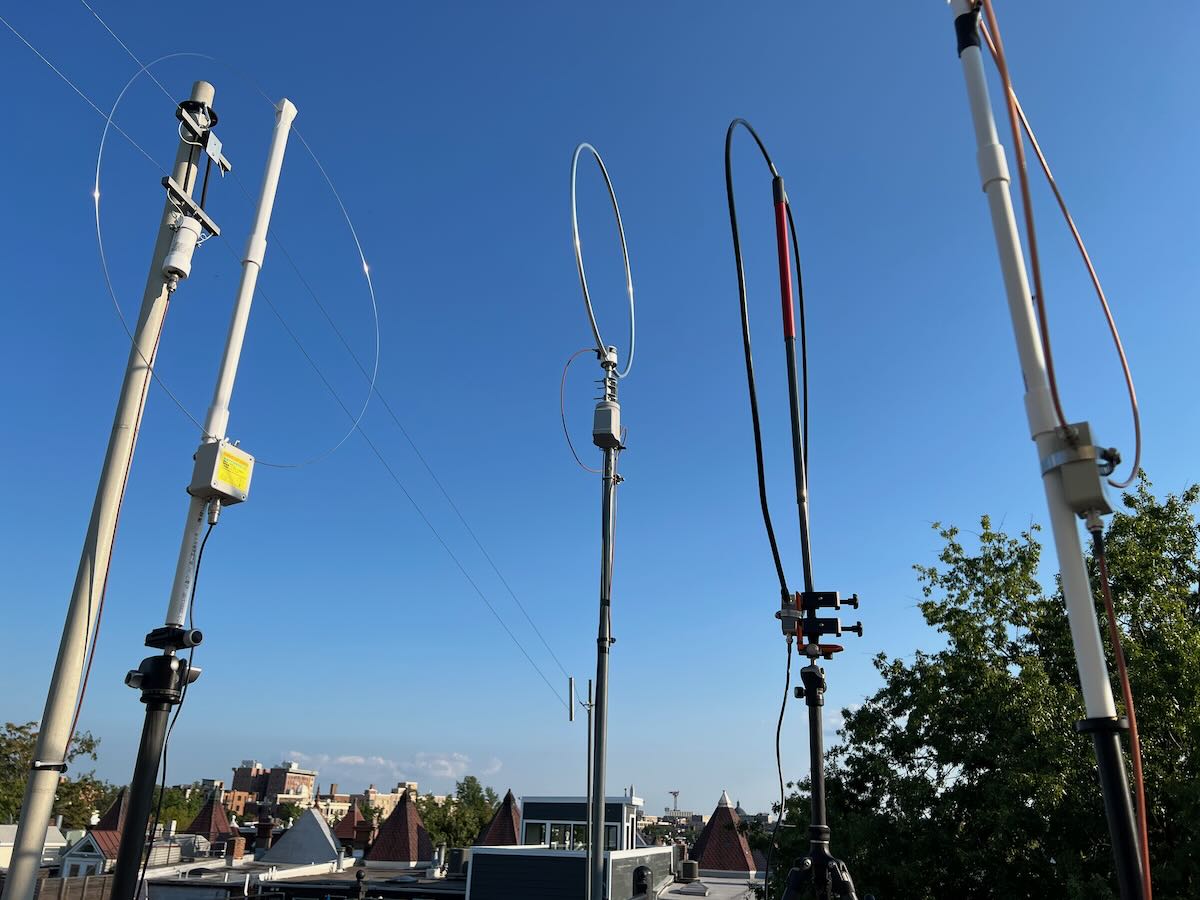 Matt’s 2022 Portable Loop Antenna Shootout
Matt’s 2022 Portable Loop Antenna Shootout
by Matt Blaze, WB2SRI
Followers of this blog may be familiar with my “shortwave radio shootouts” that I post from time to time. The idea is to compare how well different radios demodulate the exact same signal. Basically, I take a bunch of radios, hook them up to the same antenna via an RF distribution amplifier, tune the radios to some distant signal, and record the audio output from them simultaneously. Sometimes that kind of comparison can be more revealing of actual real-world performance than lab measurements or technical specifications.
The other day, I decided to do the same thing, but for antennas instead of radios. Essentially, I inverted the setup. Instead of hooking up different radios to the same antenna, I hooked up identical radios to different portable antennas and recorded them demodulating the same signals at the same time.
In this first of perhaps a series of these antenna shootouts, I wanted to compare three portable amplified magnetic loop antennas. When I say “portable” here, I mean broadband antennas that can pack reasonable compactly for travel and that can be set up and broken down easily for use “on location”, say on a picnic table or hotel balcony, or perhaps installed temporarily on a roof, without too much fuss.
The antennas are:
– The Wellbrook FLX1530LN with a 1 meter diameter loop of LMR400 coax. This is my “standard” portable antenna (I use a telescoping broom handle for the support; I wrote about it here as the “signal sweeper” last year). Excellent performance, but on the bulky side for travel. Performs well from LW through HF. Not cheap, at about USD 225 including shipping for the amplifier and power injector, but not including the loop, mounting hardware, or feedline.
– The Wellbrook FLX1530LN with a 0.5 meter diameter loop of RG142 (a stiff “aircraft grade” version of RG58 that holds it shape well at this size). I used some 1/2 inch PVC pipe as the vertical support. Because of the smaller diameter loop and thinner coax, it packs down to a much smaller and lighter package than the 1 meter LMR400 version.
– The K-180WLA, an inexpensive (about USD 60) 0.5 meter loop from China, sold on eBay and Amazon. The loop is steel wire (which can be wound down to a small diameter for transport), and the kit includes everything you need, including a rechargeable power injector. (However, the power injector uses a noisy voltage booster, so I substituted my own bias-T injector for these experiments). Ostensibly covers LW through VHF, but the low end coverage is, shall we say, somewhat aspirational, as you will see.
– I also recorded, for comparison, the built-in ferrite bar (for LW/MW) and whip antenna (for HF) of the receiver.
This is, of course, only a small sampling of portable loop antennas, both commercial and homebrew. But I wanted to start with what I had on hand and with what meets my own needs. (I omitted from consideration loops that require tuning, since I want to be able to install the antenna without needing access to it every time I change frequency).
For each signal captured, I oriented and positioned each antennas to maximize signal quality, taking care to move them away from each other and interfering metal objects. So you’re hearing (approximately) the best each antenna had to offer (on my roof under suboptimal band conditions).
The receivers I used were four Sangean ATS-909×2 portable LW/MW/SW/FM/Air radios. I believe this to be the best currently available (relatively inexpensive) portable shortwave receiver on the market. It has excellent performance (and is admirably resistant to overload and intermod when used with an active antenna). It lacks a sync mode, but that’s rarely implemented well on portable radios anyway. As a practical matter, it has a good line-level output jack, and I already happened to own four of them.
As in my other shootouts, for each signal, there are a total of five recordings: a monoaural recording of the audio from each of the four antennas, plus a narrated stereo recording comparing a reference (the 1M Wellbrook) on the Left channel with each of the other antennas in succession on the Right channel. The stereo recording is intended as a quick overview, but it will only make sense if you listen in stereo, preferably with good headphones. (You can switch the earcups to get a quick comparison as you listen.)
I made these recordings on my roof (overnight and during the day) using a Sound Devices 833 multitrack field recorder, doing the narration in real time (with a Coles “lip” microphone that gives near-studio quality audio in a very noisy environment). The RF conditions were often terrible, with generally poor band conditions and a fair bit of local electrical noise. plus nearby thunderstorms. Just perfect for testing and comparing antennas!
To avoid power line noise, ground loops, and other complications, everything (the radios, antennas, and recording gear) was run on battery power. I used inexpensive Talentcell rechargable battery packs (available on Amazon) to supply 12V to the antennas, and AA NiMH batteries for the radios.
We’ll start at the low end of the spectrum and work our way up.
Signal 1: An Aviation Beacon on 332 KHz
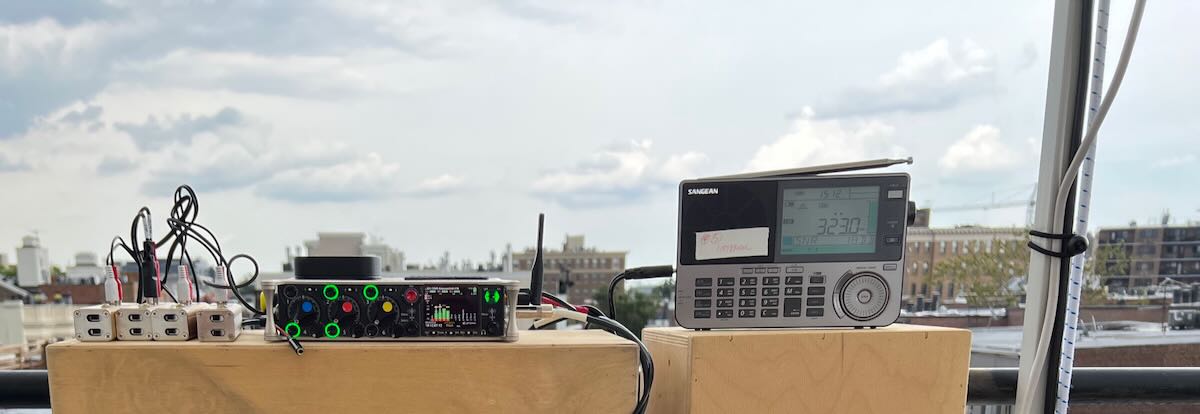 The “DC” NDB on 332 KHz guides aircraft to an northbound approach to DC’s National airport. It’s located about 12 miles from me and has a reliably good signal at all hours of the day and night. It just sends “DC” in modulated CW, over and over.
The “DC” NDB on 332 KHz guides aircraft to an northbound approach to DC’s National airport. It’s located about 12 miles from me and has a reliably good signal at all hours of the day and night. It just sends “DC” in modulated CW, over and over.
As you can hear, the Wellbrook captured it well with both the 1M and 0.5M loops, as did the internal ferrite bar (with some added noise). But the K-180WLA was pure noise, despite having advertised coverage down to 100 KHz.
Narrated stereo track:
Solo tracks for each antenna:
Wellbrook FLX1530LN (1 meter diameter)
Wellbrook FLX1530LN (0.5 meter diameter)
K-180WLA
Built-in ferrite bar
Signal 2: A low-power TIS station on 1640 KHz
In addition to the NDB beacon on 332 KHz, DC’s National airport operates a low-power “TIS” station broadcasting traffic information and other advice for travelers. It operates at the top end of the MW broadcast band on 1640 KHz and is generally readable with little interference during the day here.
The Wellbrooks both did well (with the 1M having the edge), and the K-180WLA started to come to life, yielding a usable signal. The internal ferrite bar also did well, comparable to the K-180WLA.
Narrated stereo track:
Solo tracks for each antenna:
Wellbrook FLX1530LN (1 meter diameter)
Wellbrook FLX1530LN (0.5 meter diameter)
K-180WLA
Built-in ferrite bar
Signal 3: A transatlantic weather broadcast on 5505 KHz USB.
The Shannon “Volmet” station on 5505 KHz (USB) provides 24 hour broadcasts of aviation weather for airports across Europe. It was audible (as it often is) with a weak but readable signal here. Makes you want to hop on a plane and visit the exotic- (and maybe less exotic-) sounding cities it covers.
All the loop antennas received it acceptably well, though the internal whip was easily the most marginal. There was a fair of annoying local interference, which the smaller antennas did less well rejecting.
Narrated stereo track:
Solo tracks for each antenna:
Wellbrook FLX1530LN (1 meter diameter)
Wellbrook FLX1530LN (0.5 meter diameter)
K-180WLA
Built-in whip
Signal 4: A weak broadcast from Madagascar on 9915 KHz
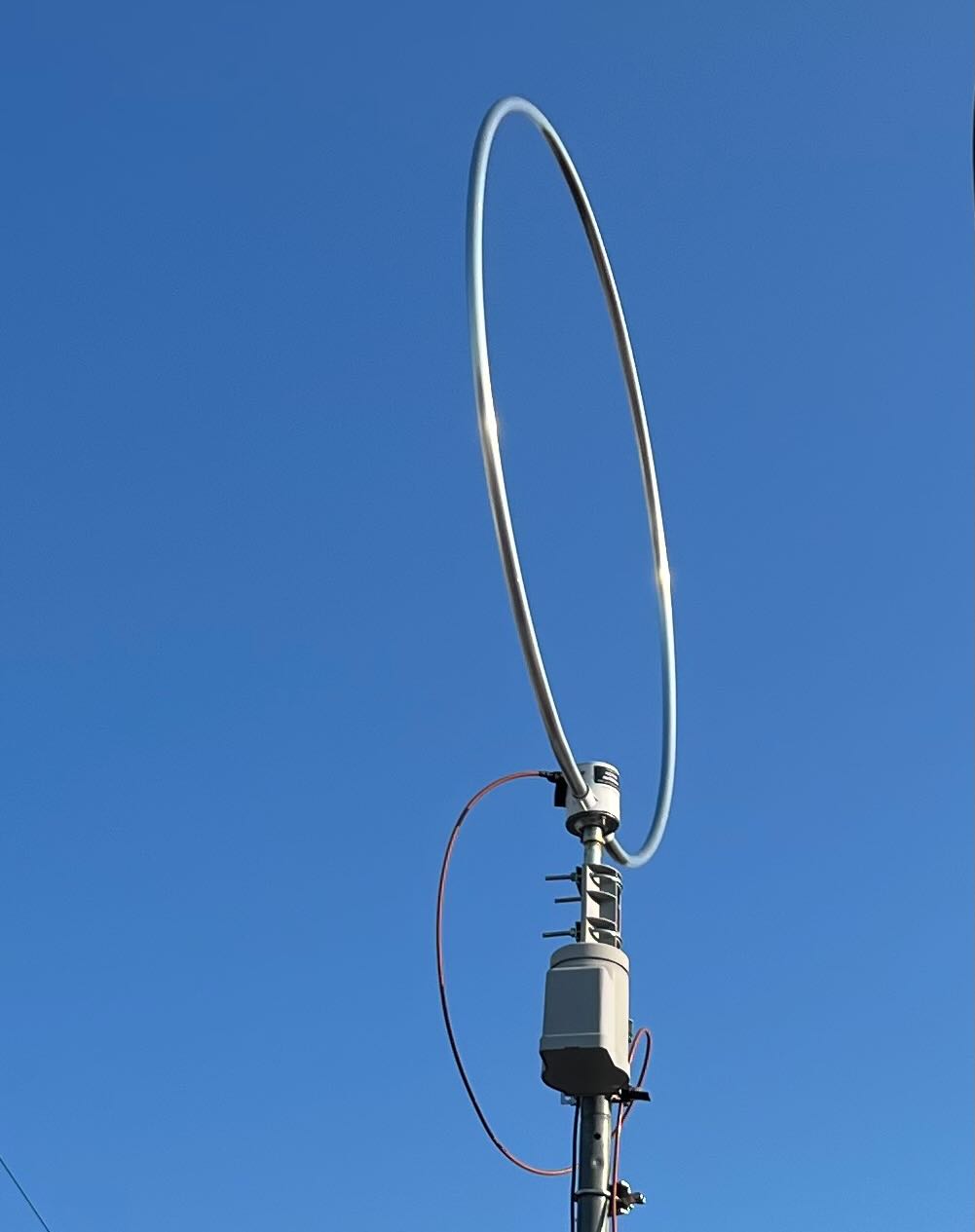 The British Empire isn’t what it once was, but the BBC still operates a number far-flung transmitters for its World Service broadcasts. A remote site in Madagascar, heard here on 9915 KHz, is intended to serve audiences in eastern and southern Africa, but is often audible here in the US. Reception was only poor-to-fair last night, but that allowed the antennas to show us what they’re made of.
The British Empire isn’t what it once was, but the BBC still operates a number far-flung transmitters for its World Service broadcasts. A remote site in Madagascar, heard here on 9915 KHz, is intended to serve audiences in eastern and southern Africa, but is often audible here in the US. Reception was only poor-to-fair last night, but that allowed the antennas to show us what they’re made of.
All three of the loops did reasonably well, the main difference being that the full size 1M Wellbrook did a somewhat better job rejecting local noise. The built-in whip on the Sangean occasionally pulled in some recognizable audio, but really couldn’t compete.
Narrated stereo track:
Solo tracks for each antenna:
Wellbrook FLX1530LN (1 meter diameter)
Wellbrook FLX1530LN (0.5 meter diameter)
K-180WLA
Built-in whip
Signal 5: WWV on 15 Mhz
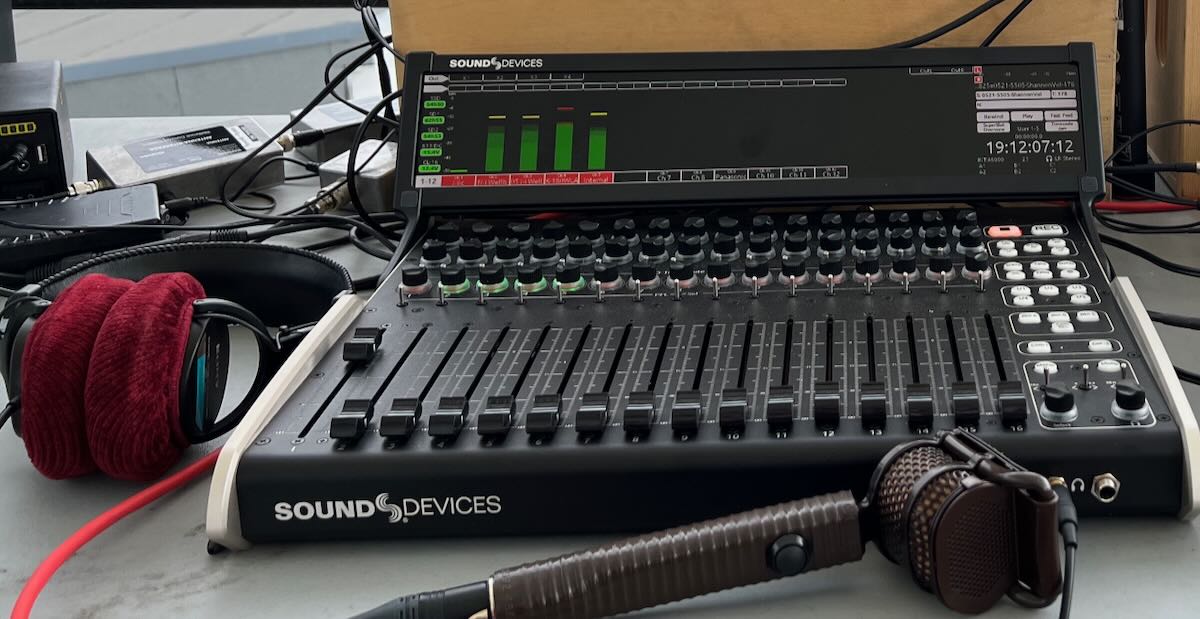 The standard time and frequency station WWV is usually a reliable 15 MHz signal at this time of year, but poor conditions made it a challenge for all of the antennas. All the loops managed to pull in some signal. The built-in whip was again left in the dust.
The standard time and frequency station WWV is usually a reliable 15 MHz signal at this time of year, but poor conditions made it a challenge for all of the antennas. All the loops managed to pull in some signal. The built-in whip was again left in the dust.
Narrated stereo track:
Click here to download.
Solo tracks for each antenna:
Wellbrook FLX1530LN (1 meter diameter)
Wellbrook FLX1530LN (0.5 meter diameter)
K-180WLA
Built-in whip
Summary
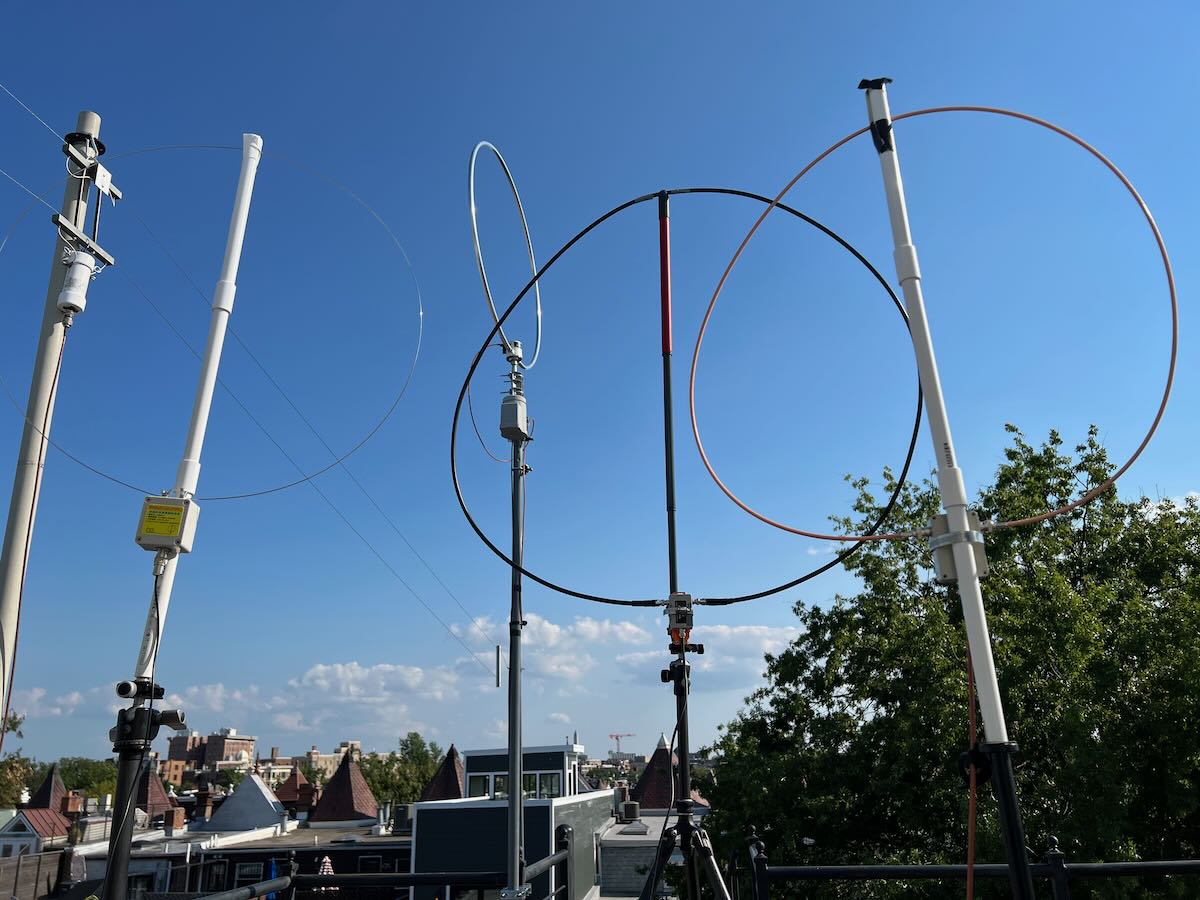 All the things that make untuned magnetic loop antennas a popular choice for space-constrained urban and suburban listening also make them an excellent travel accessory for the discriminating radio nerd.
All the things that make untuned magnetic loop antennas a popular choice for space-constrained urban and suburban listening also make them an excellent travel accessory for the discriminating radio nerd.
On a more down-to-earth budget, the K-180WLA is a good performer above about 2MHz, but rapidly degrades into uselessness as you go down into the MW broadcast band. It’s well made and travels well, able to be disassembled and packed into its original box. However, the supplied bias-T power injector incorporates a noisy voltage booster circuit. I’d recommend replacing it with an inexpensive version fed directly with 9 or 12VDC. These limitations notwithstanding, it’s a very nice antenna in the ranges it covers. (I did these tests with the internal switch set to HF, forgoing VHF coverage). But those interested in MW or LW will still need a receiver with a good quality ferrite bar antenna built in.
For those with a more lavish budget, the travel-friendly Wellbrook FLX1530LN, with even a small coaxial loop, can approach the performance of the Wellbrook base models, which are probably among the best commercially available LW-HF receive loops on the market.
As we all well know, the antenna – and its placement – is by far the most important component of any receiving setup. Aside from yielding better performance than built-in radio antennas, an easily set up external antenna in your travel kit also gives you the flexibility to locate the antenna in places with better radio reception that might not be exactly where you want to listen from.
Happy listening!
-matt

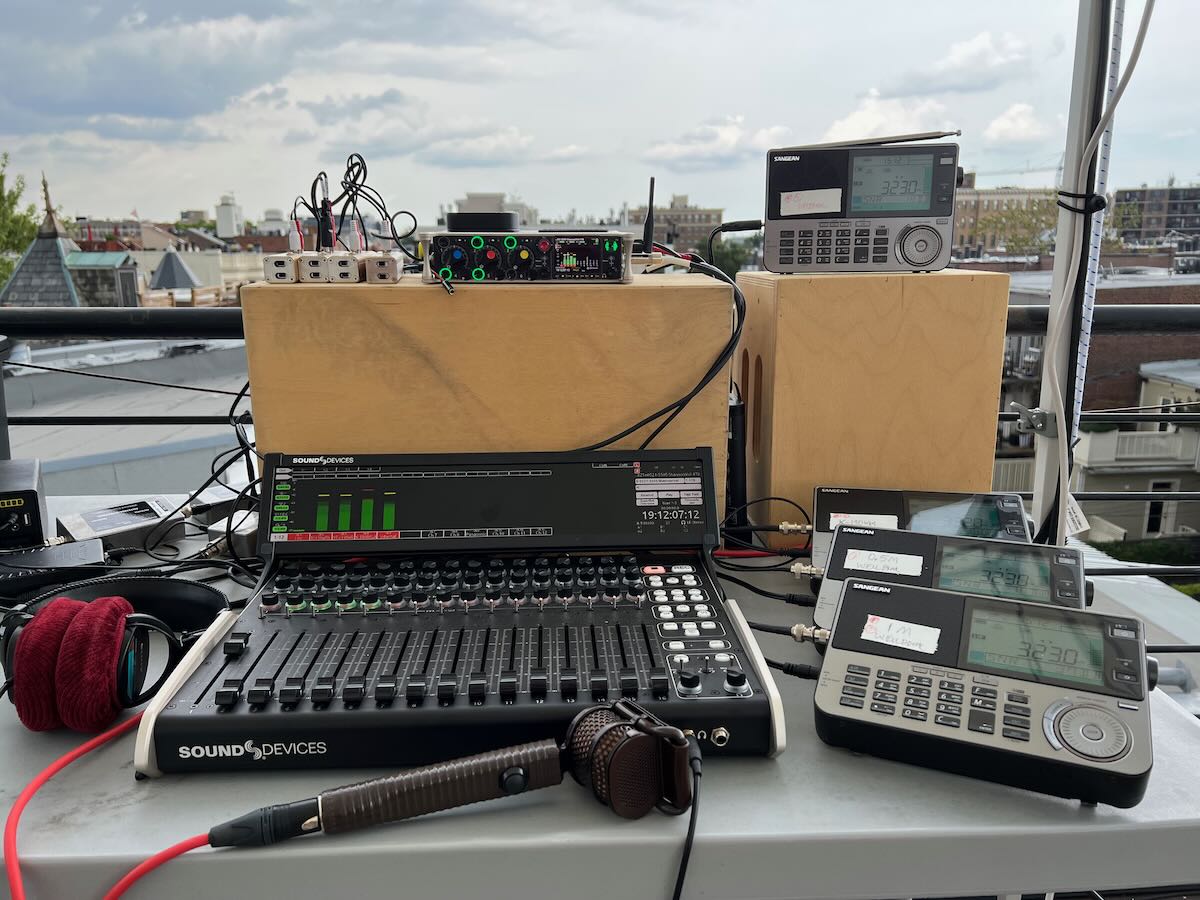
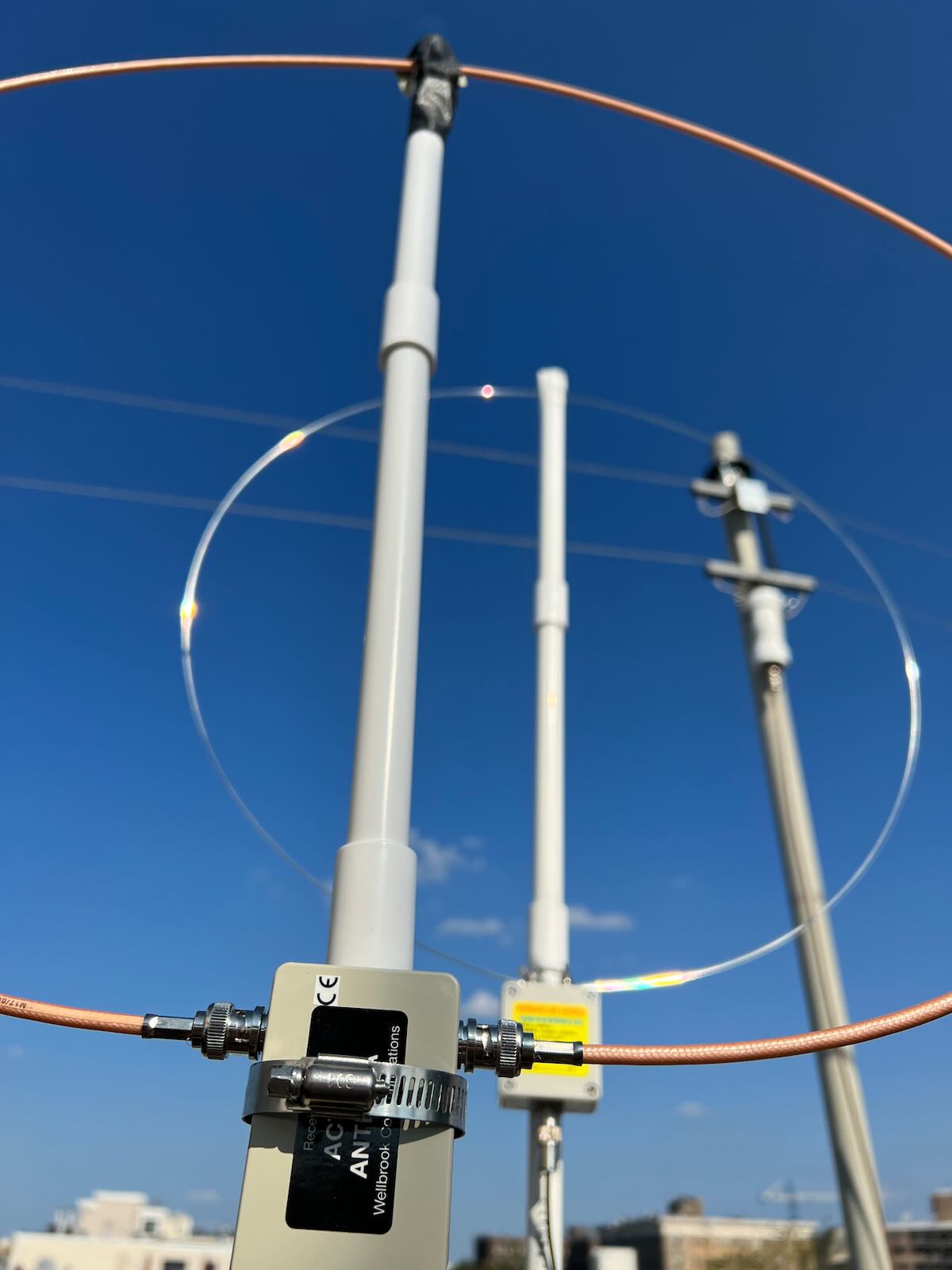
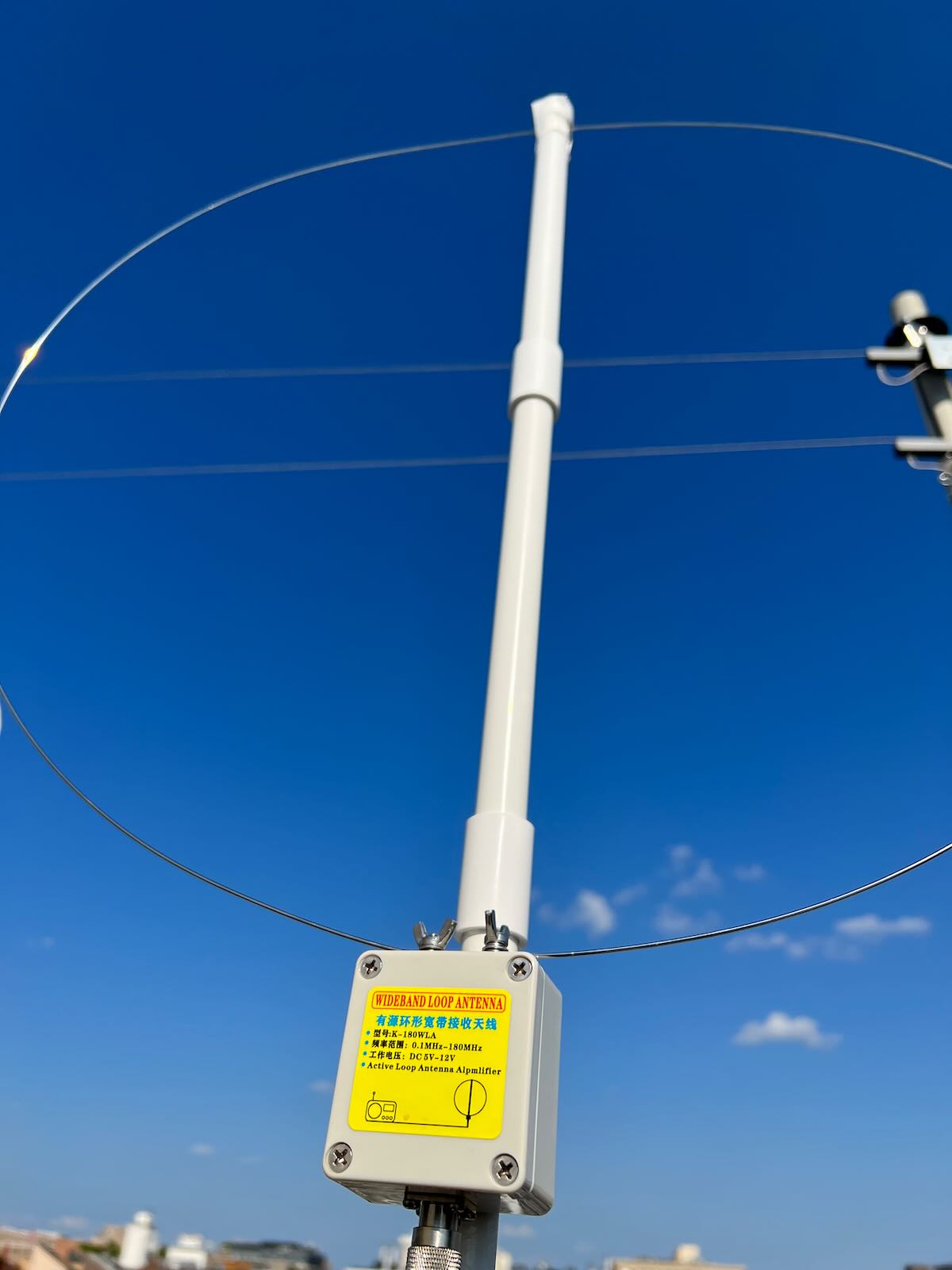
OT: I thought “why do I know the name Matt Blaze?” and, of course, the answer was because I recognized the name *last* time that byline appeared on an article here and googled … So I went through that cycle *again* and ended up at your papers on locks and safes (after being reminded of the whole Clipper Chip thing).
Being a follower of LPL over on the Tube of Ewes, I was pre-disposed to be interested in the subject and I wasn’t disappointed (I haven’t yet read the spiteful safe-cracking one yet – that’s tonight). Plus my BS is in CS though, if you look at my transcript carefully, you can see that I *actually* majored in ham radio (my alma mater had and has a great station). I just make the machines go – others do the actual computing with them.
Anyway, so … yeah. How about those loop antennas? 😀 I have an MLA-30+ that is OK, but just on MW. I also bought a K-180WLA on a lark and never put it up. Now that I’ve read this article, I will continue my plan to sell it.
Matt,
Thanks for your hard work on this. Very useful.
Ya done good!
Cheers, Jock
There are a couple pf things here that need some explaining
a. The ferrite bar in the radio is not really designed for HF; therefore any HF tests involving it are not valid
b. This report is heavily slanted to the Wellbrooks; you really should consider the W6LVP model which is also a possible candidate for a portable operation
https://www.w6lvp.com/product/w6lvp-amplified-receive-only-magnetic-loop-antenna-portable-version/
Mike,
I apologize for any confusion. I don’t know why the captions for the HF audio tracks refer to the ferrite bar; they were, as the text should make clear, the HF stations with the built-in antenna track were recorded with the whip, not the ferrite bar (which would be impossible, as the radio makes no provision to use it on HF). Only the LW and MW wave recordings use the ferrite bar. Again, see the text.
I actually have one of the W7LVP loops. They are very similar to the Wellbrooks, with somewhat inferior performance for a given size loop. If I had more identical radios on hand, I might have included one.
-matt
Sorry about that, Matt! I’ve corrected the headings I labeled incorrectly!
Mike, the mention of ferrite bars in the recording headings is my fault. During formatting of the post, I incorrectly used those as place holders for heading. All recordings above MW were of course made using the builtin whip antenna. Matt had it labeled correctly–I simply labeled it incorrectly while formatting.
I cannot find K-180WLN anywhere online; do you mean K-180WLA?
Yes; there’s a typo in a few places. Sorry.
Can you please describe how you fixed the noisy voltage booster?
Also, this is the antenna, no?
https://www.aliexpress.com/item/3256801566509609.html
Thanks!
Yes, that’s the one.
The supplied power injector runs on either USB power or an internal 18650 battery., Theoretically, that’s nice, but they use a rather noisy voltage regulator to boost it to ~9V for delivery to the antenna amp, which makes it even noisier bellow about 2 or 3 MHz. So I used a bias-T injector I had lying around in my junk box instead, which I fed directly with 12V.
The main difference is that the 1640 KHz would have been much noisier had I not done this. But this antenna really is not a great choice for MW anyway, so for most users it’s not worth the bother unless you already have another power injector lying around.
I commend you on these comparisons. I wish to make the following suggestions
1. When trying to compare the sensitivity of the antenna, the receivers automatic gain control masks any variation unless the signal is so weak that the receiver is at maximum gain. Remember that the higher the receiver gain, it is likely that the noise level in the receivers’ amplifier will increase. This noise is not coming from the amplifier in the loop antenna.
2. You say that you didn’t test tuned loop antennas because they need access. I suggest you search the internet for PK’s Remote Tuned AM C-LoopHDLRAM amongst his range of wider band antennas http://www.amradioantennas.com
3. Compare the single loop of wire to a loop constructed of many turns of wire.
Mangosman,
The limiting factor for sensitivity in all but the quietest RF environments isn’t receiver self-noise, but the RF noise floor coming in to the antenna jack (which will only be amplified by an active antenna). The advantage of loops is their superior ability to reject local electrical noise and start out with an improved S/N ratio. The disadvantage is that because loops are low gain and we want wideband performance, they need an extremely high quality amplifier to avoid injecting noise and IMD.
The practical effect of adding turns to this kind of loop is to reduce gain a bit; there’s rarely any advantage to doing so. Also, testing that configuration simultaneously would have doubled the number of identical receivers required, beyond what I had on hand.
Mangosman,
Unless you are in an exceptionally RF quiet place, receiver self-noise is not a limiting factor for received signals, rather local noise (in the air) is. This is why magnetic loops are a good performers for their size in urban and suburban environments; they attenuate electrical noise, which is a major component of most local noise sources,. But that comes with a tradeoff – magnetic loops require a high quality amplifier to avoid introducing their own noise (and IMD into the receiver’s antenna jack.
So there are two variables here the size of the loop (the “capture area”), which affects the S/N ratio of the loop (bigger is generally better), and the quality of the loop amplifier. You can see the difference in S/N as loop size increases by comparing the 1 meter Wellbrook with the 1/2 meter version. You can see the difference the amplifier quality makes by comparing the 1/2 meter Wellbrook with the K-180.
Adding turns to this kind of loop mostly just attenuates the signal.